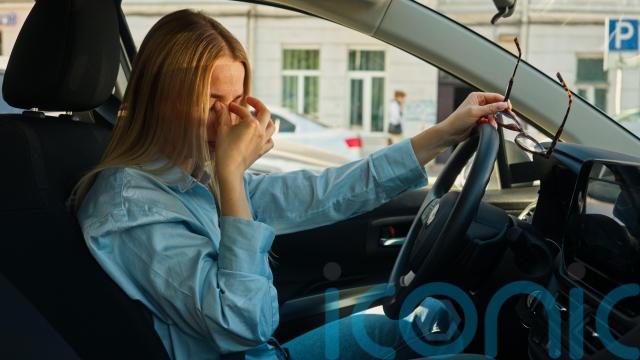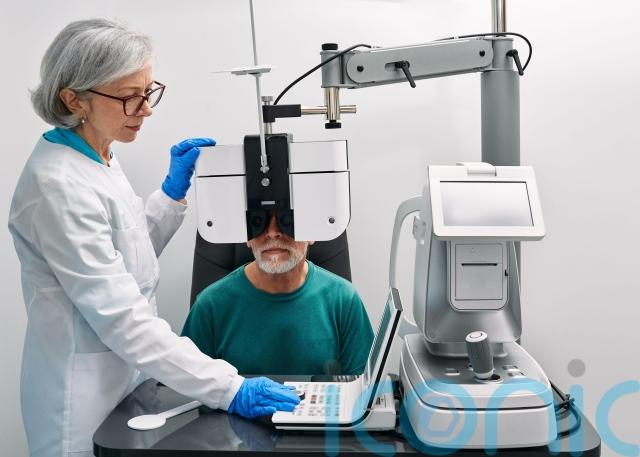
Whether you’re winding through some narrow country lanes or cruising down a busy motorway, good vision is essential – not just for your own safety, but for everyone sharing the road with you. But how can you be sure your eyesight is still up to scratch for driving?
We spoke with Clare O’Donnell, optometrist and head of eye sciences and optometry at Optegra Eye Health Care, to learn which red flags to watch out for. She also shared some valuable advice on how often you should have your eyes tested, along with a clear explanation of the legal eyesight standards for driving in the UK, so you can stay confident, safe and road-ready.
Here are some key signs that your eyesight could be affecting your driving…
Sudden changes in vision
“Any sudden changes in vision, particularly loss of vision, needs to be checked out,” highlights O’Donnell. “Blurry vision could be an indicator that we might just need to update our glasses or it might be a sign that there’s something more serious that needs to be checked out.”
Double vision
“Another thing people need to watch out for is double vision,” says O’Donnell. “So, that’s when we’re looking at something and can see two of the same thing side-by-side.”
Difficulty reading road signs
“One common thing that patients often first notice is that they start to find it difficult to read road signs until they are very close to them,” notes O’Donnell.
Struggling to drive at night

“Many patients find it more difficult to see in low light conditions and struggle driving at night time. They may notice that the glare from headlights or halos around the street lights are beginning to affect them more,” says O’Donnell.
Near misses
“Patients might notice that they begin to find it increasingly difficult to even judge distances in the car or stay in a lane,” says O’Donnell. “This could lead to more near misses, and passengers often pick up on these things before the driver.”
Tired eyes
“Another more subtle thing that we might not necessarily pick up on is our eyes feeling really tired or strained after we’ve been driving, especially if we’ve been driving for a long time,” adds O’Donnell.

What can the consequences be if somebody is driving with inadequate eyesight?
If you’re driving with incorrect vision or inappropriate vision, it could have several serious consequences.
“The main concern is safety and the increased likelihood of missing something and potentially having an accident where you could injure yourself and/or others,” warns O’Donnell.
“The police can actually conduct a roadside eyesight check, and if you’re driving without meeting the required standards, that could result in possible fines or disqualification, or even prosecution if there has been an accident. In addition, I think what people often don’t realise is that inadequate eyesight can actually invalidate your insurance.”
Can ageing affect your driving vision?
“As we get older, we often become more susceptible to certain eye conditions that can impact our vision, such as cataracts,” says O’Donnell. “So, patients that have cataracts can suffer from blurred vision and increased levels of glare at night time.”
She highlights that the main problem is that many eye conditions often come on quite gradually so are difficult to notice.
“This means you might not notice that your vision is changing day to day, but over a period of time, it might well be that you’ve gone from being within the vision standards required for driving to falling below these,” says O’Donnell.
What are the legal eyesight requirements for driving in the UK?

“In the UK, you are required to be able to read car number plate from 20 metres away (with glasses or contact lenses if you wear them) with both eyes open,” states O’Donnell. “On a standard eye test chart that the opticians use, that equates to about halfway down the letter chart. We call it six over 12, and that’s just a technical description of the label that you can read in a formal letter chart.”
Drivers are also required to have a sufficient visual field.
“What we mean by field vision is the side vision, your peripheral vision, so optometrists can do visual field checks,” says O’Donnell. “You might be asked to look into a bowl or stare at a screen and press a little buzzer when you can see a light flickering off in the periphery. That’s a visual field test.”
How often should drivers be getting their eyes tested?
“As a general rule, we are all encouraged to have our eyes checked at least once every two years,” says O’Donnell. “But we should go more frequently if we have conditions that are known to have an impact on vision, or if we notice if anything has changed.”
Subscribe or register today to discover more from DonegalLive.ie
Buy the e-paper of the Donegal Democrat, Donegal People's Press, Donegal Post and Inish Times here for instant access to Donegal's premier news titles.
Keep up with the latest news from Donegal with our daily newsletter featuring the most important stories of the day delivered to your inbox every evening at 5pm.